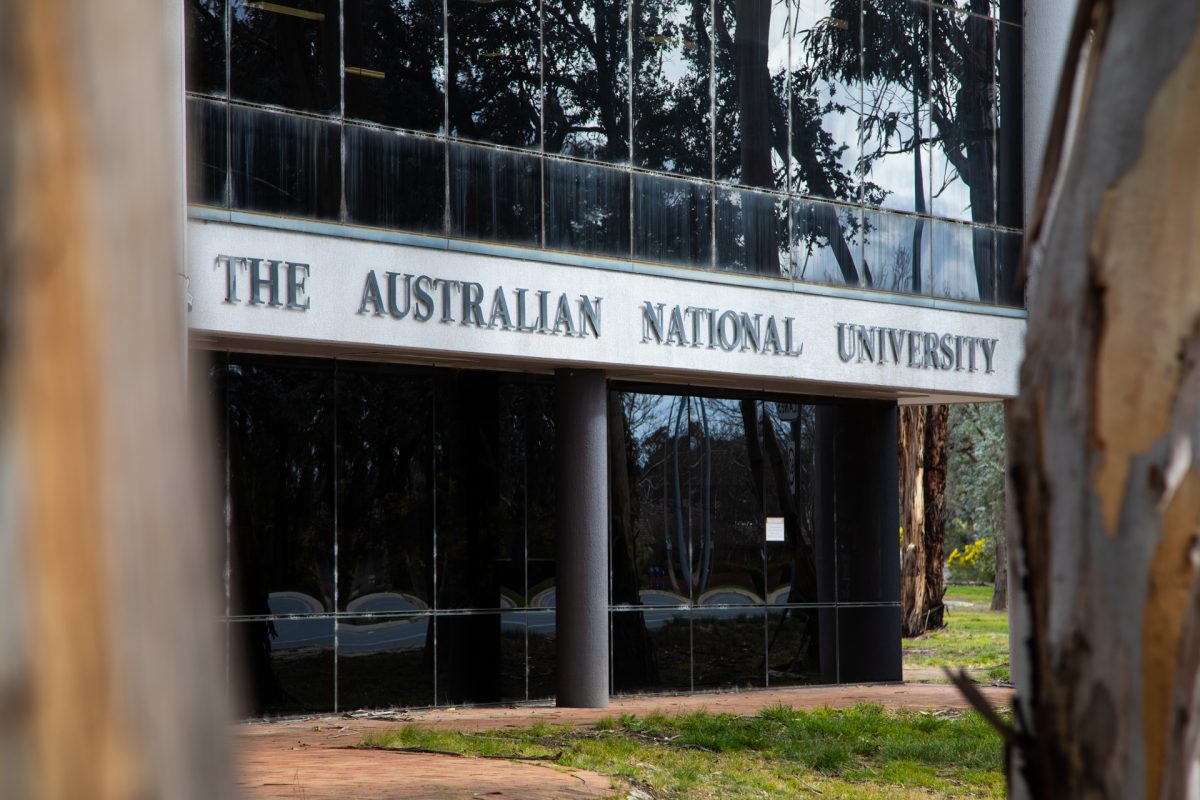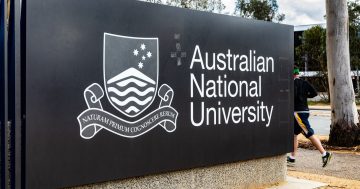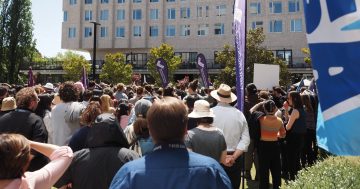
The ANU received $193.5 million in National Institutes Grant Allocation for 2024. Photo: Michelle Kroll.
The Australian National University’s recently published 2024 annual report has shown that the social sciences received the most National Institutes Grant funding for the institution, followed by medical research, the humanities and arts.
The report detailed that the ANU received $193.5 million in National Institutes Grant Allocation in 2024, with $157.3 million of that specifically going to “investment directly into building concentrations on nationally significant discipline expertise”.
Social sciences received the highest amount of this allocation at $16.1 million, followed by medical research ($13.8 million) and humanities and arts ($13 million).
It also showed that the ANU had several subjects ranked in the top 10 of the QS World University Rankings by Subject in 2024, including archaeology (8th), politics and international studies (8th), anthropology (9th), philosophy (9th), and development studies (10th).
“These are our quieter rankings stories, reinforcing our focus on creating an environment where both students and academics can thrive,” Vice-Chancellor Genevieve Bell wrote in her annual report statement.
However, it has led to questions about why these areas are being targeted in the university’s change management proposals.
Protest group Save Our Studies, Save Our Staff ANU stated the current College of Arts and Social Sciences change proposal would see 63 redundancies, pointing out that sub-disciplines such as biological anthropology and gender studies would “effectively cease to operate”, and political science, international relations and public policy disciplines would merge.
“These redundancies will not just deprive staff of their livelihoods, but also restrict what students can study,” member and ANU student Finnian Colwell said.
“We are demanding that the cuts stop, that Bell resign and that the government commit to full funding for universities.
“We are committed to disrupting business as usual at the university until management and the government accede to our demands.”
The ANU recorded a surplus consolidated operating result of $89.9 million, down on 2023’s result of $135.3 million.
The underlying operating deficit/operating revenue was down 8.71 per cent.
Throughout 2024, $11.2 million was spent on building maintenance, $14.9 million on asset replacement, and $29.4 million on capital works to rejuvenate teaching and research facilities. Additionally, 133,461 sqm of hail remediation was undertaken.
ANU spent $862.9 million on consolidated employee-related expenses (including deferred superannuation), and Chancellor Julie Bishop received an ANU Council remuneration of $75,000. Ms Bell didn’t receive any remuneration for her role on the council.
National Tertiary Education Union ACT division secretary Dr Lachlan Clohesy said the ANU had removed key senior management personnel from salary disclosures, including Vice Presidents and Deputy Vice-Chancellors.
“The Vice Chancellor earns more than double what it would take to save the School of Music. Our members are concerned that Chancelry are feathering their own nest at the expense of the University’s mission,” he said.
“ANU’s audited income statement shows a surplus of $89.9 million. Of course, ANU then excludes certain income through a process that is not audited to come up with an operating deficit of $142.5 million. At the end of September 2024, this was projected to be $200 million, and the university started sacking staff.
“Who knows what number ANU will produce next week, and the week after that? How are ANU staff to have confidence in ANU’s numbers when they change so dramatically?”
He called for no more job cuts at the ANU until the “existing damage” could be surveyed and compared with the 2025 annual report.
The ANU had a number of key performance indicators to hit. Achievements included an increase in research income (which rose by $18.5 million to $236 million) and maintaining or improving student satisfaction with teaching quality.
However, it failed to achieve its KPIs for maintaining or improving the experience for Higher Degree Research students (previously achieved, but now down 6.2 percentage points to 79 per cent), maintaining or improving overall graduate employment rates for domestic undergraduates, and maintaining or improving student satisfaction with learning resources.
On overall HDR student experience, it found there were “significant declines in satisfaction” against skill development and infrastructure, but the report noted this “could be explained by this cohort’s experience of COVID-19 during their candidature”.
“There were disruptions to laboratory experiments and other basic research infrastructure such as libraries that may account for the significant drop in this indicator,” it stated.
“Skill Development opportunities, such as fieldwork and conference travel were significantly restricted, as well as an impact from the shift to online skill development instruction.”
Graduate employment rates for domestic undergrads was down 3.6 per cent (to 85.9 per cent), but the report noted that “despite not achieving this metric, ANU is ranked number 1 in Australia for Employability in the Times Higher Education 2025 rankings”.
It also hoped that planned projects in 2025 would see the student satisfaction for learning resources metric (down 0.9 percentage points to 82.9 per cent) “significantly improve” over the coming years.
A Save Our Studies, Save Our Staff protest will be held on Wednesday, 30 July, at 12 pm on the Kambri lawns at ANU. Representatives from the NTEU, student union ANUSA and the School of Art and Design Collective will also be present.


















